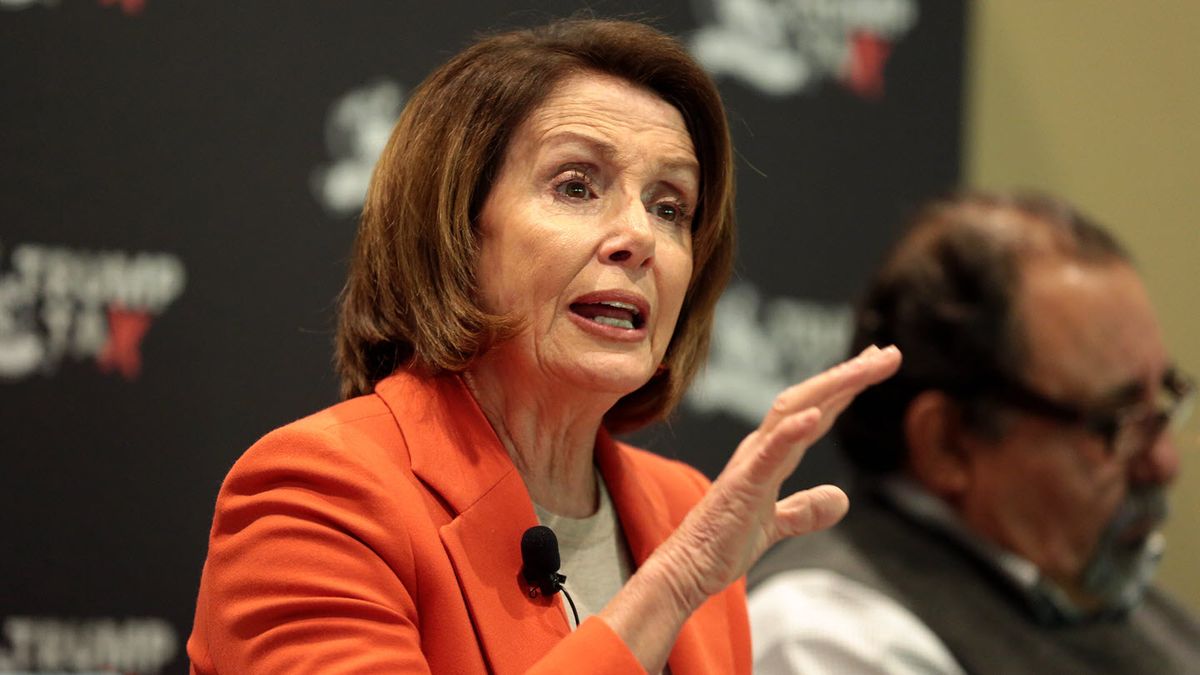To Reassert Its Lost Power, Congress Must Join the 21st Century
An obscure congressional committee may help make Congress relevant again.

The American Prospect is a nonprofit, independent magazine
covering public policy and politics. Sludge is re-publishing this article.
As Congress struggles to regain its place as the first (or even a coequal) branch of government, public attention has centered on the House committees issuing contempt citations to seek court enforcement of their Trump administration subpoenas.
But a little-noticed special committee toiling quietly out of the limelight might stand the best chance of helping Congress seize back some of the power it has ceded to the executive branch. The Select Committee on the Modernization of Congress, set up in January as part of a deal between House Speaker Nancy Pelosi and House moderates, is tackling an unglamorous but crucial question: How can Congress update its outmoded rules and infrastructure, and start to function again?
It’s no simple task. The committee’s easiest and most obvious first step, as journalist and scholar Lee Drutman has argued, would be to “give Congress its brain” back by investing in support agencies like the Congressional Research Service and especially its staff, which has dramatically shrunk in size and expertise as Hill salaries and office allowances have stagnated over a decade. This has created a vacuum that, as Drutman has shown, better-paid lobbyists and executive branch officials have all too eagerly filled.
But since congressional staff salaries are tied to those of lawmakers—by law, no Hill aide may earn more than an elected member—it’s impossible to substantially raise one without the other. And boosting lawmakers’ salaries, as House members demonstrated this week, has become politically toxic amid near-record low approval of Congress. The House was poised to vote itself a pay raise for the first time in a decade, but the plan fell apart amid objections from freshman Democrats worried about bad optics.
The good news, from the Modernization Committee’s perspective, is that there are ways to help Congress and its support staff that don’t involve a pay raise. Technology upgrades could help drag Congress’s communications platforms into the 21st century, both easing the burden on staff members, who are drowning in literally millions of emails, and helping lawmakers communicate better with their disillusioned constituents, a panel of experts testified before the committee recently.
“Americans simply don’t believe you’re listening to them,” Brad Fitch, president and CEO of the Congressional Management Foundation, told the 12-member panel, which is evenly divided between Republicans and Democrats, and which is chaired by House Democrat Derek Kilmer, of Washington. Yet research by CMF, a nonpartisan nonprofit focused on making Congress work better, has found that “in-person visits from constituents” influence undecided lawmakers more than any other advocacy strategy.
The House now fields between 25 million and 35 million communications a year, according to CMF, 90 percent of it from nonprofits and advocacy groups generating cookie-cutter messages. More than half of these messages aren’t getting opened, and half of lawmakers’ replies also aren’t being read, said Fitch, calling that the “definition of a system sorely in need of reform.” He flagged some individual lawmakers—CMF hands out “Democracy Awards” to innovators—who have rolled out high-tech tools like hyperlinked e-newsletters, and live-streamed town hall meetings, that other House Members could emulate.
The best model for a high-tech fix that would help constituents and lawmakers alike may be online “deliberative town halls” that have been piloted in 13 congressional districts by a team of academic researchers in partnership with CMF. The online town halls worked best when they recruited a cross-section of constituents that genuinely represented the district, focused on a single topic, gave participants nonpartisan background materials to read in advance, and were moderated by a neutral facilitator, Ohio State University professor Michael Neblo told the committee.
“Our message is, with innovative outreach efforts elected officials can do well by doing right,” said Neblo, who helped spearhead the project as director of the university’s Institute for Democratic Engagement and Accountability. Congress should also expand its limited pool of vendors and cultivate more competition between them to give the Hill better technical tools, testified Marci Harris, a former congressional aide who co-founded and runs POPVOX, an online platform connecting constituents with lawmakers.
Of course, technology fixes are only a tiny part of what it’s going to take to get Congress working again, and to restore its stature and institutional leverage. Kilmer’s Modernization committee, which is co-chaired by Republican Tom Graves, of Georgia, is receiving no shortage of suggestions from congressional reform advocates: Restore regular order, put the committees back in charge, eliminate scheduling conflicts, free lawmakers from the endless treadmill of campaign fundraising.
And until lawmakers can reach across the partisan divide, no amount of institutional tinkering will end congressional dysfunction. But Kilmer’s committee broke through the usual gridlock last month when it unanimously approved its first set of recommendations across party lines. The plan would “Open Up” Congress by expanding lobbying disclosure, and creating an online “HUB” to let constituents track committee votes and the authorization process. It’s not the stuff of front-page headlines. But it’s the kind of nitty-gritty structural change that may do the most to restore Congress as a functioning branch of government.
Related:




Comments ()